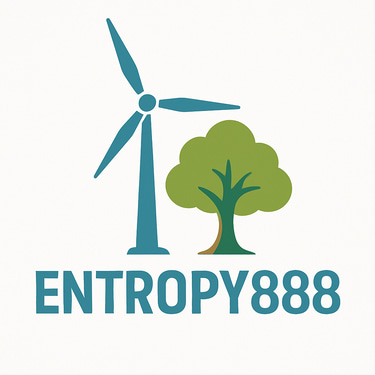Geothermal Energy for Bitcoin Mining: Untapped Potential
When people think about renewable energy, wind and solar usually come first. But beneath our feet lies another powerful, consistent, and underutilized resource: geothermal energy. By tapping into the natural heat of the Earth, geothermal plants generate reliable, low-cost electricity. For Bitcoin mining — an industry that needs cheap, 24/7 power — geothermal could be one of the best-kept secrets in renewable energy.
MINING TECHNOLOGY & EFFICIENCY
Chris Boubalos
9/26/2025
What Is Geothermal Energy?
Geothermal energy comes from heat stored beneath the Earth’s surface.
Wells are drilled into hot reservoirs.
Steam or hot water drives turbines.
The result is clean, renewable electricity.
Unlike wind or solar, geothermal is available day and night, year-round.
Why Geothermal Suits Bitcoin Mining
24/7 Baseload Power
Mining rigs run non-stop, and geothermal delivers continuous supply.
Low Operating Costs
Once a plant is built, electricity costs remain stable and predictable.
Sustainability
Geothermal plants produce minimal emissions compared to fossil fuels.
Location Synergy
Mining containers can colocate at geothermal sites in remote regions.
Global Examples
Iceland – A world leader in geothermal energy, powering both homes and data centers. Mining in Iceland benefits from nearly 100% renewable grids.
El Salvador – The first country to adopt Bitcoin as legal tender has announced geothermal-powered mining from volcanic energy.
Kenya – With vast geothermal resources in the Rift Valley, the country is exploring Bitcoin mining to monetize surplus generation.
These examples show that geothermal is not just theory — it’s already being applied.
ROI Considerations
Capex: Building geothermal plants is capital-intensive.
Opex: Once online, power costs can be as low as $0.02–0.04/kWh.
Scalability: Suitable for regions with strong geothermal activity, but limited by geography.
Example ROI:
A 50 MW geothermal plant dedicating 10 MW to mining.
Hosting ~3,000 next-gen hydro or immersion miners.
Continuous 24/7 uptime improves payback vs. intermittent renewables.
Challenges of Geothermal Mining
Geographic Limits – Only feasible in regions with geothermal activity.
High Initial Investment – Drilling and exploration costs are significant.
Regulatory Barriers – Permits and environmental reviews can delay projects.
Still, when combined with containerized mining, these challenges can be overcome by deploying miners directly at geothermal sites.
The Future of Geothermal + Bitcoin Mining
As demand for sustainable mining grows, geothermal offers unique potential:
Volcano-powered mining in regions like Central America.
Grid balancing in countries with surplus geothermal.
New investment opportunities where mining makes geothermal projects more bankable.
It may not be as widespread as wind or solar, but where conditions are right, geothermal could become a cornerstone of clean, profitable Bitcoin mining.
Conclusion
Geothermal energy is reliable, renewable, and underused. For Bitcoin mining, it provides exactly what operators need: cheap, 24/7 electricity with minimal emissions.
At Entropy888, we believe geothermal will play a bigger role in the future of sustainable mining — helping to unlock untapped potential beneath the Earth’s surface.
Contact
© 2025. All rights reserved.
Christos Boubalos - Business Development Lead +306972 885885 mob/whatsapp
christos@entropy888.com
-------------------------------------------
General Enquiries - info@entropy888.com
